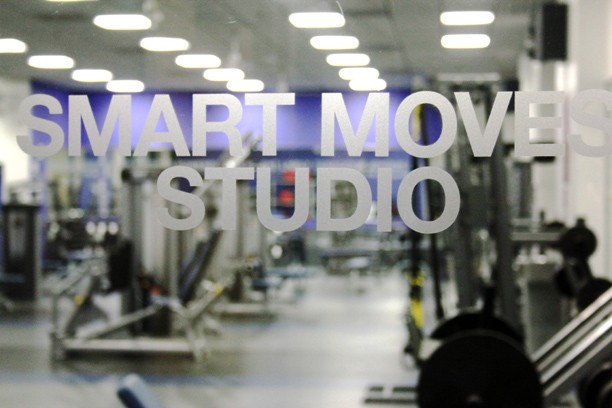Next month, the campus community can identify healthier choices around the campus through icons placed on certain food items.
Well-U, Campus Recreation Center, Campus Health and Student Unions Dining Services, among others, have partnered to create the Smart Moves program. The program consists of identifying healthy choices for the campus community, as well as smart activities that can be taken to increase healthy living. A red box with the letters “SM” will be placed next to food items that are considered a “smart move.”
“It’s not about living your life and being perfect,” said David Salafsky, director of health promotion and preventative services for the Campus Health Service. “It’s not about never having an indulgence. It’s more about making the smart move 80 percent of the time.”
The Rec Center’s Smart Moves studio is already open for students to use and reserve for small group training. The Rec Center will continue to promote healthy options by placing the Smart Moves icon next to activities that are good choices, such as taking the stairs rather than the elevator or along bike paths.
Well-U has created the criteria union food will be judged by to be a “smart move”. For the test phase, Pangea, IQ and one other restaurant will have the icon on the menus. A food item will be given points based off of having positive or negative nutritional qualities and its sustainability, which is determined by whether or not it’s locally grown. Sodium, sugar, trans fats, fiber, and protein are some of the nutritional qualities that will be considered for point scoring, according to Todd Millay, marketing and communications manager for student affairs.
The point of the program is to try and educate people on what making a smart move means. The point scoring information will be shared on the website so that students can learn, Millay said.
“When you go to make a choice at the service line, we want you to see a little image or an icon,” Millay said. “And when you see it’s smart moves, we’ve done the work for you. You don’t have to think ‘Is that low in fat?’ or ‘Is it sourced locally?’ We’ve done this work and told you ‘Yes, it’s good for you’.”
The points for each food item may be shown online, but not at the initial launch in mid-February, according to Millay.
“Often times we think about what’s the next thing in terms of health and wellness,” Salafsky said. “We realized there is so much here already, how do we make those choices a little bit easier for people.”
Gluten-free, vegetarian, and vegan options will have icons on menus as well, but only online, Millay said.
“We were experimenting on putting the little dots on the plasma,” Millay said, “but it looked terrible. But we are going to online [show the icons].”
On the website, gluten-free, vegan, and vegetarian options will be shown in a chart format. In the future, there might be a sorting function to find just the options that are vegan or gluten-free, Millay said. Initially, students will be able to scan a QR code that will open the smart moves website on their phone. He said he hopes that one day, an app will hopefully be in place.
Some students said they felt this is a good direction for the UA to take.
“I’m a freshman and I’ve never been by myself before,” said Jamie Simmons, an environmental studies freshman. “I had no idea what I was ordering [before]. I think it would be fun to have an idea that [this food item] is better for me than that is and that.”
The Smart Moves program will gauge student feedback after the test phase in mid-February, according to Millay.
“A lot of people don’t care, they like milkshakes and they like hamburgers,” Millay said. “But for us, we’re not only trying to do what’s best for students, but run a business at the same time. We would gladly shift our menus to 80 percent smart moves as long as students are buying them.”









